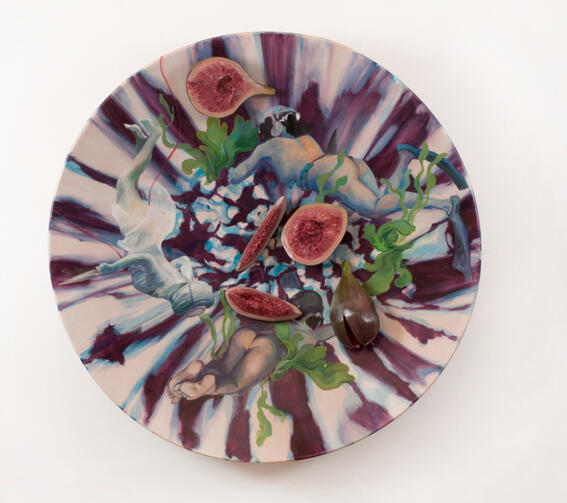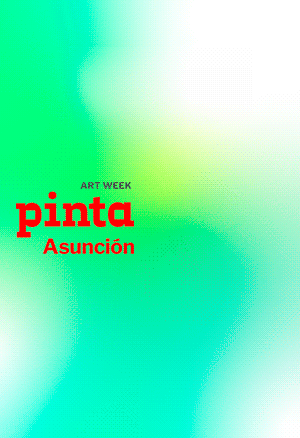On Painting
Centro Atlántico de Arte Moderno, Las Palmas de Gran Canaria
At a time when painting as a method, and its validity, are questioned from different fronts, the emergence of voices that somehow oppose those critiques is not undesirable.

Let us call it counter-critique or revision of the discourse; the fact is that “On painting”, the group show featured by the CAAM in Gran Canaria is, to say the least, an inexorable point for reflection. Omar Pacual- Castillo, curator of the exhibition and artistic director of the Center, has intended to demonstrate, through the work of over sixty Ibero-American contemporary artists, that painting has ceased to be just an artistic genre also to become an independent method or language. The road proposed to support this thesis takes us on a tour of almost twenty years of painting, mainly Spanish and Latin American – although the exhibition also includes works by artists from the USA, the Philippines and Belgium – which constitute the basis for four lines of research aimed at inquiring into the pictorial praxis ranging from the turn of the past century to what we have consumed of the present one. These itineraries focus on the new abstract experiences, the influence of “acid” painting, the adaptation of the narrative element in a visual environment and the miscellanea in the origins of the painting of several generations.
“Splash Color and Materials” is the first of these approaches, featuring the works of abstract artists, especially noteworthy among which are the selected proposals of Juan Uslé (Santander, Spain, 1954), Arturo Herrera (Caracas, Venezuela, 1959) and Marlon de Azambuja (Sto. Antonio da Patrulha, Brazil, 1978) who, resorting to different supports, share the use of painting as form of expression for their language. “Amargo sabor, la náusea”, advocates the inclusion of the so-called “acid” painting within the non-conformist current more closely linked to irony as a form of expression, such as that exercised by José Bedia (Havana, Cuba, 1959), Manuel Ocampo (Quezon, Philippines, 1965), Abdul Vas (Maracay, Venezuela, 1981) or Santiago Ydáñez (Jaén, Spain, 1969), all of them referents – each in his own way – of a rhetorical vision that is as conclusive and persuasive as it is personal. The section titled “Post-Hispanic Narratives” portrays the vision of the more narrative discourses in the context of the era of the image, a period which, associated to the “new” media, has witnessed the growth of different pictorial discourses in an environment that has forced an adaptation of this narrative which has been almost as immediate as the temporal obsolescence that characterizes this new era. Pablo Alonso (Gijón, Spain, 1964) or Carlos Salazar (Bogotá, Colombia, 1973), among others, join Francis Alÿs (Antwerp, Belgium, 1959), Sandra Gamarra (Lima, Peru, 1972) or Martín & Sicilia (Santa Cruz de Tenerife, Spain, 1971 and 1974) in bringing to the fore their propositions and certifying that language is not restricted exclusively to the environment. As a last proposal, “Tutto revoluto” gathers together a roster which includes, among its most outstanding names, those of Luis Gordillo (Seville, Spain, 1934), Guillermo Kuitca (Buenos Aires, Argentina, 1961) or Adriana Varejão, alongside the Caribbean artists Edouard Duval-Carrié (Port au Prince, Haiti, 1954) and Melvin Martínez (San Juan, Puerto Rico, 1976), to portray the transition from that aesthetic of exaggeration, of unconcealed excess that confronts the more classic tradition. “On Painting” is thus structured as an elaborate thesis work showing this individual breakdown of the pictorial traits and their relocation within the concept of contemporaneousness – or perhaps immediateness – of Ibero-American art of the past two decades.






